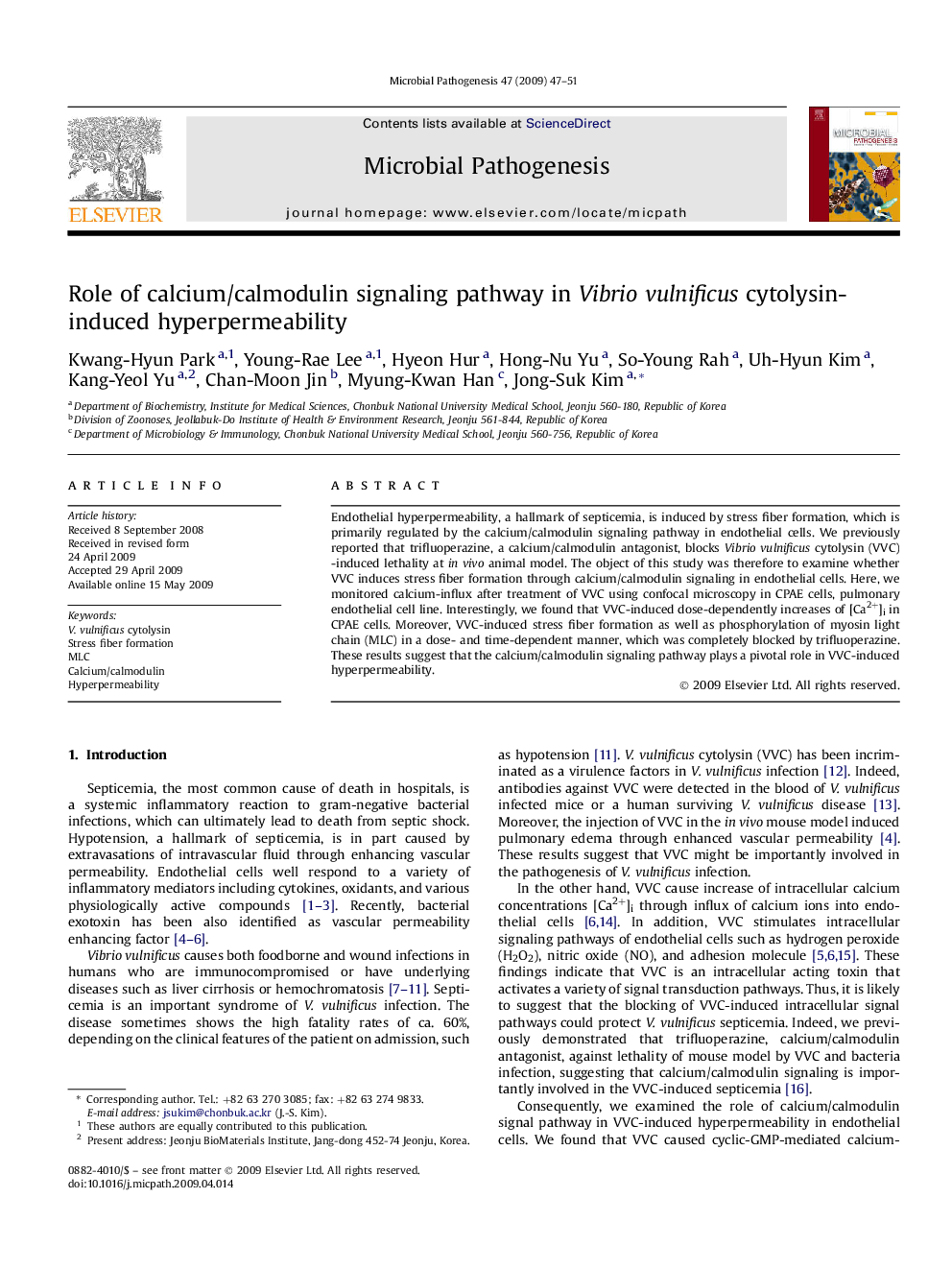| Article ID | Journal | Published Year | Pages | File Type |
|---|---|---|---|---|
| 3416961 | Microbial Pathogenesis | 2009 | 5 Pages |
Endothelial hyperpermeability, a hallmark of septicemia, is induced by stress fiber formation, which is primarily regulated by the calcium/calmodulin signaling pathway in endothelial cells. We previously reported that trifluoperazine, a calcium/calmodulin antagonist, blocks Vibrio vulnificus cytolysin (VVC) -induced lethality at in vivo animal model. The object of this study was therefore to examine whether VVC induces stress fiber formation through calcium/calmodulin signaling in endothelial cells. Here, we monitored calcium-influx after treatment of VVC using confocal microscopy in CPAE cells, pulmonary endothelial cell line. Interestingly, we found that VVC-induced dose-dependently increases of [Ca2+]i in CPAE cells. Moreover, VVC-induced stress fiber formation as well as phosphorylation of myosin light chain (MLC) in a dose- and time-dependent manner, which was completely blocked by trifluoperazine. These results suggest that the calcium/calmodulin signaling pathway plays a pivotal role in VVC-induced hyperpermeability.
